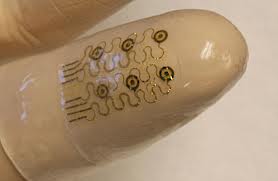A new electronics technology, transient electronics is the official name, just melts away within the body after doing its job.
Testing in the lab has already taken place in areas such as wound healing, temperature sensors, solar cells and a 64 pixel digital camera, though what most of those applications could be used for inside the human body is anyones guess.
Unlike ordinary electronics, which are built to last, transient electronics are not. These small devices are designed to fade away, to dissolve at a pre-set rate leaving no trace in the body.
Silicon, a major component of the devices melts in water anyway, if thin enough, like the nanomembranes used in transient electronics there would be no trace of them within a couple of weeks. To control the speed of the melt scientists use silk which is dissolved and then reformed and it is this alteration of the silk that coats the silicon that enables the melt time to be controlled.
One likely use is to control wound infection and the devices have been tested on rats, being placed in the wound immediately prior to closure. The wounds heated to a temperature that inhibits the growth of bugs leading to less infection. Other uses were bound to be found for transient electronics such as computer components and mobile phones.
Imagine the environmental benefits if cell phones for example could just dissolve instead of languishing in landfills for years…

